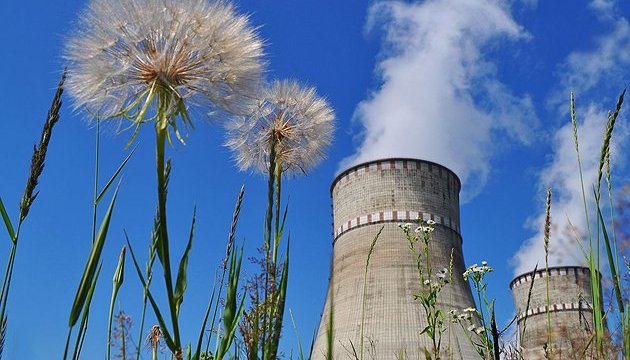УДК 556.314:556.388 • Issue 2 (30) / 2019 • 46-55 pages
Udalov I. V., Levoniuk S. M.
Udalov I. V., Doctor of Sciences (Geology), Associate Professor, Head of Department, V. N. Karazin Kharkiv National University, https://orcid.org/0000-0003-3844-6481, igorudalov8@gmail.com
Levoniuk S. M., Researcher, Ukrainian Research Institute for Natural Gases, https://orcid.org/0000-0002-4073-8152, sergii.levonyuk@gmail.com
Abstract
A modern conceptual approach to a study of the ecological and hydrogeological transformation of the qualitative composition of drinking groundwater of the buchak-kaniv aquifer in the central part of Dnipro-Donetsk artesian basin in the current natural-technogenic conditions has been proposed in the article. A rational unification of the indicators that characterize geological, ecological-hydrogeological and neotectonic conditions of the territory has been done. According to these conditions – natural and technogenic factors of the water quality deterioration of the target aquifer have been identified and investigated at the present stage. The spatio-temporal patterns of changes in the chemical composition of the studied waters during the period of active complex technogenic influence on the geological environment of the region (1960-2015) have been revealed. The main pollutant elements of these waters have been established, with their distribution at depth and surface by genesis. The elements-indicators of qualitative composition transformation of the groundwater have been determined. The authors have traced the dynamics exhibiting an increase in its content during long-term exploitation at about 20 powerful urban water intakes within the work area. According to this approach, measures for the stabilization of the waters’ chemical composition at the buchak-kaniv water intakes of the research area have been developed. The authors justified a methodical approach to the prediction of groundwater ecological condition changes under the influence of the established ecological and hydrogeological factors. The measures of eco-friendly groundwater management at strategically important water intakes within the region have been proposed. Recommendations have been given for both existing and prospective water intakes.
Key words: conceptual approach, destabilization of groundwater quality, spatio-temporal patterns, elements-indicators, buchak-kaniv water intakes.
Article
Reference
- Varava, K. N., Vovk, I. F., Negoda, G. N. (1977), Formirovanie podzemnykh vod Dneprovsko-Donetskogo basseyna, Naukova dumka, Kyiv, UA, 160 p.
- Derzhavni sanitarni pravyla i normy «Gigiyenichni vymogy do vody pytnoyi, pryznachenoyi dlya spozhyvannya lyudynoyu»: DSanPiN 2.2.4-171-10, Ministerstvo oxorony zdorovya Ukrayiny, No. 400, Кyiv, UA, 45 p.
- Kononenko, A. V., Udalov, I. V. (2016), Osnovni peredumovy znyzhennya yakosti pytnyx pidzemnyx vod krejdyanyx vodozaboriv Sxidnoyi Ukrayiny, Bulletin of V. N. Karazin Kharkiv National University. Series “Geology-Geography-Ecology”, No. 44, Kharkiv, UA, pp. 63-70.
- Levonyuk, S. M. (2019), Vplyv transformaciyi yakisnogo skladu pytnyx pidzemnyx vod na zdorovya naselennya u mezhax deyakyx miskyx aglomeracij Sxidnogo regionu, REGION-2019: socio-geographical aspects: materials of the International Scientific and Practical Conference of students, graduate students and young scientists, Kharkiv, UA, pp. 151-153.
- Levonyuk, S. M. (2019), Obgruntuvannya vydilennya perspektyvnyx dilyanok dlya rozmishhennya novyx buchaczko–kanivskyx vodozaboriv u mezhax Sxidnoyi Ukrayiny, Achievements and prospects of development of geological science in Ukraine: materials of the Scientific conference dedicated to the 50th anniversary of the Institute of Geochemistry, Mineralogy and Ore Formation named M. P. Semenenko, Kyiv, UA, pp. 135-136.
- Metodicheskie rekomendatsii po organizatsii i vedeniyu monitoringa podzemnykh vod (izuchenie rezhima khimicheskogo sostava podzemnykh vod), VSYeGINGYeO, Moscow, UA, 76 p.
- Ognyanik, N. S. (1985), Okhrana podzemnykh vod v usloviyakh tekhnogeneza, Vishcha shkola, Kyiv, UA, 221 p.
- Reshetov, I. K., But, Yu. S., Drobnokhod, N. I. et al. (1987), Malye artezianskie basseyny Severo-Zapadnogo Donbassa, Naukova dumka, Kyiv, UA, 200 p.
- Udalov, I. V., Levonyuk, S. M. (2018), Ekologo-gidroximichni osoblyvosti transformaciyi yakosti pytnyx pidzemnyx vod pid vplyvom texnogennyx ta neotektonichnyx faktoriv (na prykladi buchaczko-kanivskyx vodozaboriv Sxidnoyi Ukrayiny), Search and ecological geochemistry, No. 1 (19), Kyiv, UA, pp. 30-40.
- 10. Udalov, V., Levonyuk, S. M. (2018), Kompleksna geoekologichna ocinka zaxyshhenosti pytnyx pidzemnyx vod, Bulletin of Odessa National University. Series: Geographical and geological sciences, No. 2 (33), Odessa, UA, pp. 111-133.
- Chomko, D. F. (2001), Zakonomirnosti formuvannya pidzemnyx vod na dilyankax vodozaboriv Prydoncivya, PhD (Geology) abstract of dissertation [04.00.06 – Hydrogeology], Kyiv, UA, 16 p.
- Shestopalov, V. M., Babinets, A. Ye., Borevskiy, B. V. et. al. (1979), Formirovanie ekspluatatsionnykh resursov podzemnykh vod platformennykh struktur Ukrainy, Naukova dumka, Kyiv, UA, 216 p.
- Yakovlyev, V. V. (2015), Zakonomirnist formuvannya solіovogo skladu pryrodnyx vod zony aktyvnogo vodoobminu Ukrayiny, Bulletin of V. N. Karazin Kharkiv National University. Series “Geology-Geography-Ecology”, No. 43, Kharkiv, UA, pp. 93-100.
- Yakovlyev, V. V., Kononenko, A. V. (2018), Obgruntuvannya racionalnogo rozmishhennya novyx vodozaboriv v mergelno-krejdyanomu vodonosnomu goryzonti na terytoriyi Sxidnoyi Ukrayiny, Hungarian scientific journal (electronic version of the journal), No. 23, Budapest, HU, pp. 8-14.
- Yakovlev, Ye. A., Yurkova, N. A., Slyadnev, V. A. (2001), Metodologiya otsenki ekologicheskogo sostoyaniya podzemnykh vod, Ecology and Resource Saving, No. 3, Kyiv, UA, pp. 56–59.
- 16. Udalov, V., Levoniuk, S. M., Nimets, N. M. (2019), Role of technogenic component in processes of groundwater composition transformation at buchak-kaniv water intakes in Eastern Ukraine (on example of F– content), Eastern European Scientific Journal (Gesellschaftswissenschaften), No. 2, Auris Verlag, Düsseldorf, GE, pp. 86-93.
